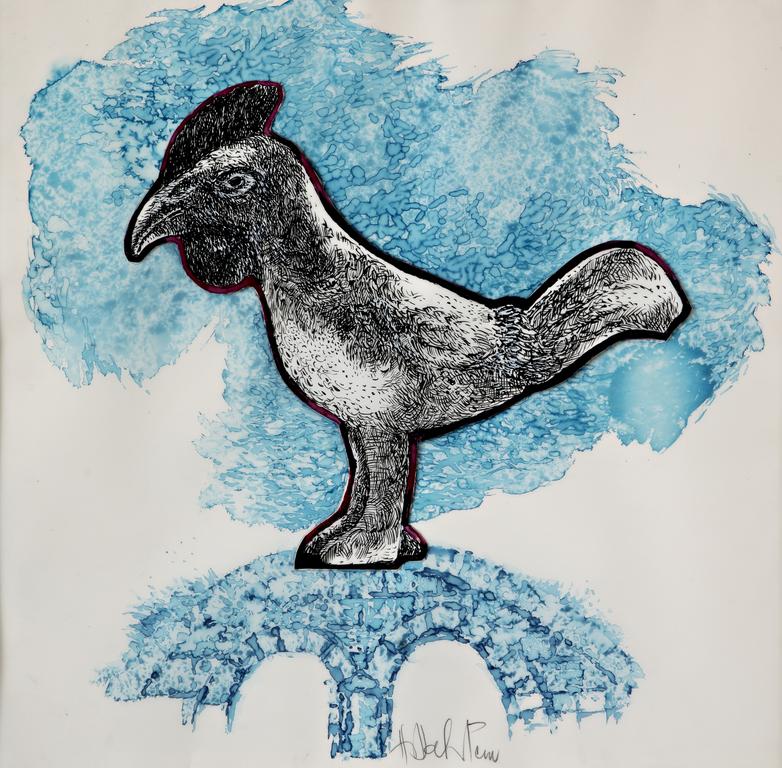Hans Dahlem: Gallischer Hahn, 1996 (Gallic Rooster, date of origin unknown)

Material not specified, 50 x 50 cm
To be clear: this "Gallic Rooster" is actually not a Gaul, but a Roman. However, this rooster made by Roman craftsmen was actually used in Gaul - in a village or a small town, where this mass-produced sculpture either served as a toy or belonged to a house shrine around 2,000 years ago. Not only in northern Saarland are there impressive relics of the Celts, who the Romans called Gauls (hence the title "Gallic Rooster", Gauls = inhabitants of France, western Germany and other regions). In the south-east of Saarland, on the site of this Gallic village, there is now the European Cultural Park Bliesbruck-Reinheim between Reinheim in Saarland, Germany and Bliesbruck in Lorraine, France. This archaeological park is particularly famous for its reconstructed tumulus of a Celtic princess with abundant burial objects, its Roman vicus (a small town) and its palatial villa. Jean Schaub from Saargemünd initiated and co-founded it.
In 1996, the aforementioned Jean Schaub found this small rooster figure on the grounds of today's cross-border European Culture Park, exactly on the German-French border. Roosters and chickens have existed in Europe since the Iron Age (= roughly: the age of the Celts). Initially, the magnificent rooster was more important than the eggs: cockfights were held and roosters and chickens were given away as gifts for guests or dowrys. They were both a welcome addition to the menu and a popular sacrificial animal (the rooster). The small rooster statuette was made from this tradition.
A few months after Schaub's discovery, the founders of the initially binational German-French association "Begegnungen auf der Grenze e.V." chose this small rooster as their logo. The painter Hans Dahlem was commissioned to design the motif and, at the same time, had a limited edition printed. The founding director of the academy, Arno Krause, acquired the original painting from the association "Begegnungen auf der Grenze" for the academy.
Hans Dahlem (*1928 in Blieskastel, †2006 in Saarbrücken, both in Germany) was a painter, graphic and object artist and also a friend of Arno Krause. He was one of the artists who significantly developed Saarland art in the post-war period. He held two ehibits at the Academy - in 1972, he showed his works in a solo exhibition and in 1974 in a joint exhibition of the group "Fisematenten". Surrealism influenced his work, as did, at times, Cubism. Dahlem often chose contemporary prose and poetry as the leitmotif of his works, drawing particular inspiration from his close friend Ludwig Harig, a writer and literary translator from Saarland. He was equally fascinated by mythical or rational explanations of different peoples relating to the origins of the world (cosmogony). This motif had determined his work in almost infinite variations since 1963.